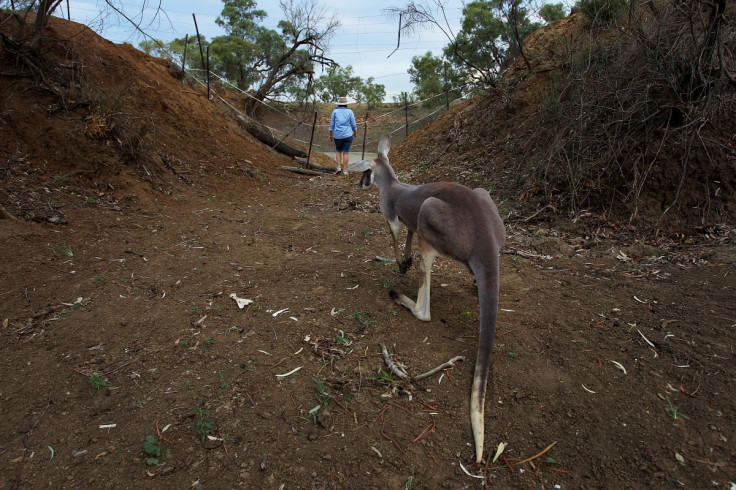Five-Legged Kangaroo: Australian Marsupials Walk on Tail as 'Extra Leg'

Kangaroos use their tails to walk as an extra fifth leg, Australian scientists have discovered.
Researchers at the University of New South Wales have examined how the marsupials walk and found that they use their long, muscular tails in the same way as their other limbs.
The findings provide new insights into kangaroo movement and could also have applications in advanced robotics.
Professor Terry Dawson, leader of the study, said that in the hopping motion of kangaroos, the tail acts as a counterbalance and as a spring to store energy for the next bounce.
"Hopping is an exaggerated gallop, enabling the kangaroo to make longer steps," Dawson told ABC Science Online.
He added that when kangaroos walk, it is known as a "pentapedal tail walk."
The gait means the animal effectively always has three points on the ground, one of which is always their tail, while the other two are either the hind legs or the forelimbs.
Previous studies have suggested that the tail was used to support the kangaroo, judging from the muscle structure. But to Dawson, the explanation didn't quite fit.
"It appeared to me they were using the tail for propulsion when walking," he said.
For the study, the team trained five red kangaroos, Macropus rufus, to "walk" pentapedally over a force-measuring platform while they were being videotaped. A low ceiling was positioned over the walkway to prevent them from hopping.
The team measured the propulsive energy produced by each of the four limbs and the tail. It was discovered that the tail provides as much propulsive energy as all four limbs combined, and as much as a third of the total propulsion needed to move the kangaroos forward.
"We expected this is because the muscles in the tail and hind legs are highly aerobic, with a lot of mitochondria (where energy is produced in the body's cells) in them doing a lot of work," said Dawson, as reported by Science AAAS.
"The muscle structure of the front legs have little mitochondria and they're not organised for propulsion, so instead of the tail being the strut, the front legs were filling that role," he added. "I can now understand where that energy goes and why if they're going to walk more than 5 metres they get up and hop instead."
The study was published in the journal Royal Society Biology Letters.
© Copyright IBTimes 2025. All rights reserved.






















